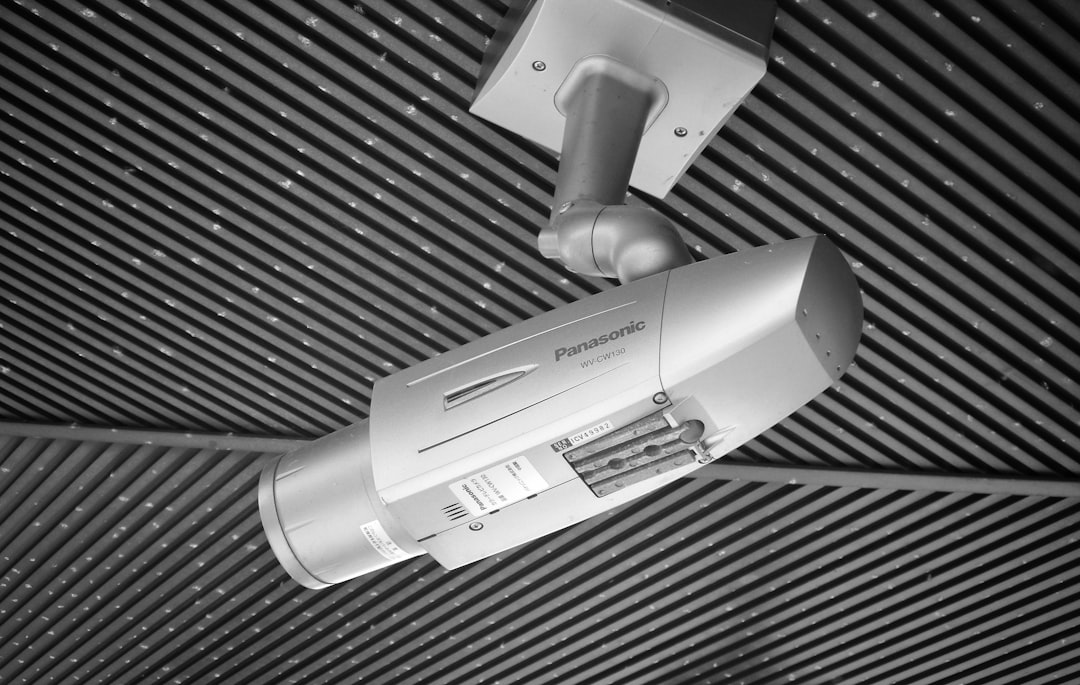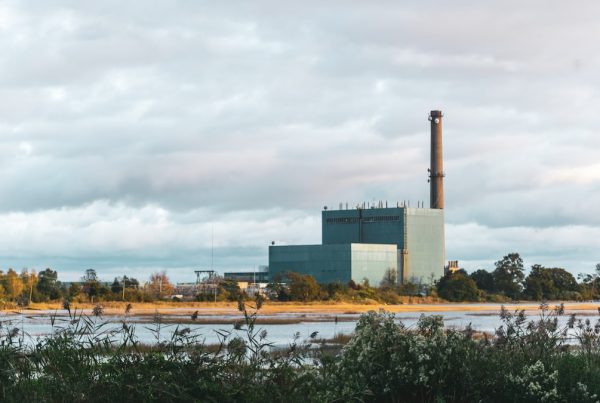Critical infrastructure encompasses the fundamental systems and assets essential for the proper functioning of society and the economy. This includes key sectors such as energy, transportation, water supply, telecommunications, and healthcare. These systems form the backbone of a nation’s economic stability and security, and any disruption to them can result in widespread consequences.
Critical infrastructure is vital for the daily operations of businesses, government entities, and the general public. Without these systems in place, a society’s ability to function effectively would be severely compromised. The interconnected and interdependent nature of critical infrastructure means that a disruption in one sector can have far-reaching effects on others.
For instance, a cyber-attack targeting a power grid could not only disrupt electricity supply but also impact transportation systems, communication networks, and healthcare facilities. This interconnectedness makes critical infrastructure particularly vulnerable to various threats, including natural disasters, cyber-attacks, terrorist activities, and physical sabotage. As a result, protecting critical infrastructure is of paramount importance in ensuring a nation’s resilience and security.
Key Takeaways
- Critical infrastructure refers to the essential systems and assets that are vital for the functioning of a society and economy.
- Threats to critical infrastructure can come from natural disasters, cyber attacks, terrorism, and physical attacks, among others.
- Safeguarding critical infrastructure is crucial to ensure the stability and security of a nation.
- Strategies for protecting critical infrastructure include risk assessment, implementing security measures, and investing in resilient technologies.
- The government plays a key role in safeguarding critical infrastructure through regulations, funding, and coordination with private sector and other stakeholders.
Threats to Critical Infrastructure
Critical infrastructure faces a wide range of threats that can disrupt its operations and cause significant harm to a nation’s economy and security. One of the most pressing threats is cyber-attacks, which have become increasingly sophisticated and pervasive in recent years. Hackers and state-sponsored actors target critical infrastructure systems to disrupt operations, steal sensitive information, or cause widespread chaos.
These attacks can lead to power outages, transportation disruptions, and compromised communication networks. In addition to cyber-attacks, critical infrastructure is also vulnerable to physical threats such as terrorism, sabotage, and natural disasters. Terrorist organizations may target key infrastructure assets to create fear and disrupt the functioning of a society.
Sabotage by disgruntled employees or external actors can also cause significant damage to critical infrastructure. Furthermore, natural disasters such as hurricanes, earthquakes, and floods can damage infrastructure assets and disrupt essential services. These threats highlight the need for robust security measures to protect critical infrastructure from potential harm.
Importance of Safeguarding Critical Infrastructure

Safeguarding critical infrastructure is essential for maintaining the stability and security of a nation. The functioning of critical infrastructure is crucial for the delivery of essential services, the operation of businesses, and the overall well-being of the population. Without reliable infrastructure, the economy would suffer, public safety would be compromised, and essential services such as healthcare and transportation would be disrupted.
Therefore, protecting critical infrastructure is vital for ensuring the resilience and continuity of a nation’s operations. Furthermore, safeguarding critical infrastructure is important for national security. Critical infrastructure assets are potential targets for adversaries seeking to undermine a nation’s stability and security.
By protecting these assets, a nation can reduce its vulnerability to attacks and ensure that essential services remain operational in the face of threats. Additionally, safeguarding critical infrastructure can help mitigate the potential impact of natural disasters and other emergencies, thereby enhancing a nation’s ability to respond to crises effectively.
Strategies for Protecting Critical Infrastructure
| Strategy | Description |
|---|---|
| Risk Assessment | Identify and assess potential risks to critical infrastructure. |
| Physical Security | Implement measures to protect physical infrastructure from threats. |
| Cybersecurity Measures | Implement security measures to protect against cyber threats. |
| Emergency Response Planning | Develop plans to respond to and recover from potential incidents. |
| Public-Private Partnerships | Collaborate with private sector entities to enhance infrastructure protection. |
There are several strategies that can be employed to protect critical infrastructure from various threats. One approach is to enhance cybersecurity measures to defend against cyber-attacks on essential systems. This includes implementing robust firewalls, encryption protocols, and intrusion detection systems to prevent unauthorized access to critical infrastructure networks.
Regular security audits and employee training can also help identify vulnerabilities and mitigate potential risks. Physical security measures are also crucial for protecting critical infrastructure from physical threats such as terrorism and sabotage. This may involve implementing access controls, surveillance systems, and perimeter security to prevent unauthorized individuals from gaining access to sensitive infrastructure assets.
Additionally, regular maintenance and inspection of infrastructure assets can help identify potential weaknesses and prevent them from being exploited by malicious actors. Furthermore, investing in resilience and redundancy measures can help mitigate the impact of disruptions on critical infrastructure. This includes developing backup systems, emergency response plans, and recovery strategies to ensure that essential services can be restored quickly in the event of an incident.
By implementing these strategies, nations can enhance the security and resilience of their critical infrastructure.
Role of Government in Safeguarding Critical Infrastructure
The government plays a crucial role in safeguarding critical infrastructure by establishing regulations, standards, and frameworks to ensure the security and resilience of essential systems. Government agencies are responsible for identifying critical infrastructure assets, assessing their vulnerabilities, and developing strategies to protect them from potential threats. This may involve collaborating with private sector stakeholders to develop best practices and guidelines for securing critical infrastructure.
Additionally, governments are responsible for providing resources and support to enhance the security of critical infrastructure. This may include funding for cybersecurity initiatives, physical security enhancements, and resilience measures to mitigate the impact of disruptions. Furthermore, government agencies are often tasked with coordinating response efforts in the event of a crisis or emergency that affects critical infrastructure.
Moreover, governments play a role in regulating the security practices of private sector entities that own or operate critical infrastructure assets. This may involve establishing cybersecurity standards, conducting regular audits, and enforcing compliance with security regulations to ensure that essential systems are adequately protected. By taking these actions, governments can help ensure the security and resilience of critical infrastructure.
Collaboration and Partnerships in Protecting Critical Infrastructure
Protecting critical infrastructure requires collaboration and partnerships between government agencies, private sector stakeholders, and other relevant entities. Government agencies can work with industry partners to share information about emerging threats, best practices for security measures, and response strategies in the event of an incident. This collaboration can help enhance the overall security posture of critical infrastructure by leveraging the expertise and resources of both public and private sector entities.
Furthermore, public-private partnerships can facilitate the sharing of resources and expertise to address common challenges in protecting critical infrastructure. This may involve joint initiatives to develop cybersecurity solutions, conduct threat assessments, or implement resilience measures to mitigate the impact of disruptions. By working together, government agencies and private sector stakeholders can enhance the security and resilience of critical infrastructure.
Moreover, international collaboration is essential for protecting critical infrastructure from global threats such as cyber-attacks and terrorism. Nations can share information about emerging threats, coordinate response efforts, and develop common standards for securing critical infrastructure assets. By collaborating at an international level, nations can enhance their collective ability to protect essential systems from potential harm.
Future Challenges in Safeguarding Critical Infrastructure
As technology continues to advance and new threats emerge, safeguarding critical infrastructure will remain a complex and evolving challenge. Cyber-attacks are becoming increasingly sophisticated, making it difficult for organizations to defend against potential breaches in their systems. Additionally, the interconnected nature of critical infrastructure means that a disruption in one sector can have cascading effects on other sectors, making it challenging to predict and mitigate potential impacts.
Furthermore, as nations become more reliant on digital systems and interconnected networks, the potential for widespread disruptions from cyber-attacks increases. This highlights the need for robust cybersecurity measures to protect critical infrastructure from evolving threats. Additionally, as climate change leads to more frequent and severe natural disasters, ensuring the resilience of critical infrastructure will become increasingly important.
Moreover, as technology continues to advance at a rapid pace, new vulnerabilities may emerge that could be exploited by malicious actors seeking to disrupt essential systems. This requires organizations to continuously adapt their security measures to address emerging threats effectively. Additionally, as the reliance on digital systems grows, ensuring the security of supply chains and third-party vendors will become increasingly important for protecting critical infrastructure.
In conclusion, safeguarding critical infrastructure is essential for maintaining the stability and security of a nation’s economy and society. By understanding the interconnected nature of critical infrastructure and the various threats it faces, organizations can develop robust strategies for protecting essential systems from potential harm. Collaboration between government agencies, private sector stakeholders, and international partners is crucial for enhancing the overall security posture of critical infrastructure.
As technology continues to advance and new threats emerge, organizations must remain vigilant in adapting their security measures to address evolving challenges effectively. By taking proactive steps to protect critical infrastructure, nations can enhance their resilience in the face of potential disruptions and ensure the continuity of essential services for their citizens.
For those interested in enhancing their understanding of critical infrastructure protection, a relevant article can be found on Cybersecurity Decoder. The article provides insights into the latest strategies and technologies used to safeguard essential services and facilities from cyber threats. You can read more about these protective measures and their importance by visiting Critical Infrastructure Protection Strategies. This resource is invaluable for professionals seeking to enhance their knowledge in cybersecurity defenses tailored specifically for critical infrastructure.
FAQs
What is critical infrastructure protection?
Critical infrastructure protection refers to the measures and efforts taken to secure and safeguard essential systems and assets that are vital for the functioning of a society and economy. This includes sectors such as energy, transportation, water, communication, and financial services.
Why is critical infrastructure protection important?
Critical infrastructure protection is important because these systems and assets are essential for the functioning of a society and economy. Disruption or damage to critical infrastructure can have severe consequences, including economic loss, public safety risks, and national security threats.
What are some examples of critical infrastructure?
Examples of critical infrastructure include power plants, transportation networks (such as airports and highways), water treatment facilities, communication systems, financial institutions, and healthcare facilities.
What are the main threats to critical infrastructure?
The main threats to critical infrastructure include natural disasters, cyber attacks, physical attacks, and other forms of sabotage. These threats can cause disruption, damage, or destruction of essential systems and assets.
How is critical infrastructure protected?
Critical infrastructure is protected through a combination of physical security measures, cybersecurity measures, emergency preparedness and response plans, and coordination between government agencies, private sector entities, and international partners.
Who is responsible for critical infrastructure protection?
Responsibility for critical infrastructure protection is shared among government agencies, private sector organizations, and international partners. In many countries, there are specific government agencies or departments dedicated to overseeing and coordinating critical infrastructure protection efforts.




